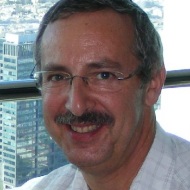May 24th is Yom Yerushalayim – Jerusalem Day – and the 50th anniversary of the reunification of Israel’s capital in the Six-Day War. Jerusalem is often called “the Eternal City” but although it has existed for over 3,000 years, it is continually evolving.
Two days after Yom Yerushalayim, visitors to Jerusalem’s Tower of David Museum can enjoy a guided tour that traces the Six Day War’s influence on the architecture of the city as euphoric construction began in the city after June 1967. Jerusalem’s landscape is still in flux, with the commencement of work on a new $364 million, 173-acre Jerusalem Gateway business park. It will include nine 36-floor skyscrapers, business centers, hotels, and 70,000 square meters of leisure and cultural spaces. On a smaller scale, the Talpiot neighborhood of Jerusalem used to be known mostly for its garages, but tech startup initiatives are replacing the garages with modern office buildings and showrooms.
Public institutions recently constructed in Jerusalem, or in progress, include the Schottenstein National Campus for the Archaeology of Israel – the largest center in the world for the presentation of the archaeological heritage of the Land of Israel. Then there is the new interactive, state-of-the-art Jewish Music museum, which attracts 1000 visitors a month. Another development is a 2.5 acre $50 million Jerusalem Arts Campus with 4 schools and 650 students which plans to open in 2020.
Sea Israel: The Gottesman Aquarium, at Jerusalem’s Biblical Zoo, is set to open on June 19. Meanwhile, Robert Kraft – owner of the New England Patriots – has donated $6 million to create Jerusalem’s Kraft Family Sports Campus. And I must include the rebuilding of the 144-year-old Tiferet Yisrael Synagogue. It should look magnificent, judging by the success in rebuilding the Hurva Synagogue which, like the Tifert Yisrael, was destroyed by the Jordanian army in the 1948 War of Independence.
Jerusalem is also undergoing a technical upgrade. Its largest public park, 40-acre Gan Sacher is to be made safer and greener with smart lighting, new irrigation, photovoltaic panels, electric bike and smart phone charging stations and public Wi-Fi. In fact, free Wi-Fi, already available in the German Colony and Ben Yehuda street, is now being installed to all four quarters of the Old City to benefit millions of tourists, merchants and residents. In 2018, Israel’s first high speed electric train is scheduled to arrive from Tel Aviv, revolutionizing Jerusalem’s transportation system and ushering in an economic boom. In just 28 minutes, the train will travel over Israel’s longest bridge, through Israel’s longest tunnel and cross its tallest bridge, before reaching Israel’s deepest station and one of the largest in the world.
Whilst anticipating an economic boom in 2018, Jerusalem is already one of the world’s top emerging technological hubs, according to Time Magazine. Jerusalem-based OurCrowd hosted Israel’s largest-ever investment event with over 6,000 attendees from 82 countries, including startups, investors and 200 multinational corporations. One multinational, medical device giant Medtronic is to open a new R&D center in Jerusalem. Meanwhile, the Jerusalem Development Authority’s Jnext program has helped set-up 110 new Jerusalem startups in 2016 alone, no doubt encouraged by a reduction in Corporation tax from 25% to 9%. Israel’s largest exits also came out of Jerusalem when Cisco bought NDS and Intel bought Mobileye.
Jerusalem is re-building on firm foundations. Almost every week there is news of archaeological discoveries proving ancient Jewish roots to the Holy City – evidence that UNESCO and Israel’s detractors turn a blind eye to. This includes shells from the sea-snail Murex trunculus, used in Biblical times to make the blue dye Tekhelet, which colored the fringes worn on 4-cornered Jewish garments and the robe of the High Priests serving in the Jerusalem Temple. Other finds include a 2,100-year-old inscribed bowl from the Hasmonean period; coins depicting Greek, Roman and Jewish leaders mentioned in ancient Jewish historical writings. There are even weapons and sling stones that the Romans used to destroy Jerusalem’s walls, nearly 2,000 years ago. Where are the Romans now?
Ancient Jerusalem streets are being excavated and re-dedicated, such as the 2,000-year-old “Pilgrim’s Way” in the City of David, where pilgrims walked to the entrance of the Temple. Another new route, that pilgrims also used, is the Jerusalem Park trail that passes many of the capital’s 200 purification baths (mikvot), of which 50 have been unearthed adjacent to Temple Mount. And this video describes the Temple Sifting Project’s discovery of fragments of the decorative tiles with which King Herod refurbished the floor of the Second Temple.
No wonder Jerusalem is one of the best places to travel to – according to Travel & Leisure magazine. Jerusalem of Gold has never looked so beautiful. The excitement of the “build-up” to Jerusalem Day is almost physically tangible – huge numbers gathered to celebrate Yom Yerushalayim at the Western Wall last year, so one can only imagine the joyful scenes at the upcoming 50th Anniversary of the city’s reunification.
Finally, Jerusalem’s Hadassah hospital and the Hebrew University of Jerusalem have re-built thousands of lives (of all religions) with their medical innovations and discoveries. But I have no space left in my blog to re-construct these articles. So please go to www.IsraelActive.com, and search for “Hadassah” and “Hebrew University”.
At the end of the Passover service, Jews around the world express the hope “Next Year in Jerusalem”. In my home we said:
“This Year in Rebuilt Jerusalem”

Sign the Declaration to Keep Jerusalem United
Jerusalem Must Remain the United Capital of Israel
I declare that Jerusalem is the eternal capital of the Jewish People and support all efforts to maintain and strengthen a united Jerusalem as the undivided capital of the State of Israel.
See our Privacy Policy

